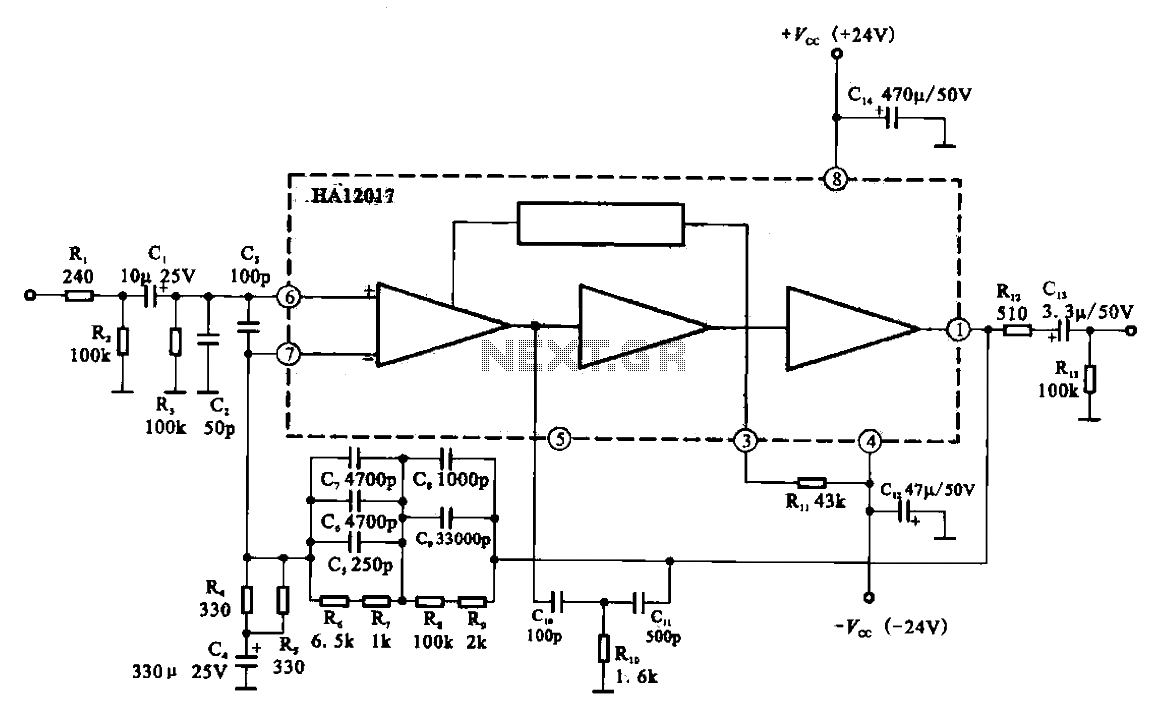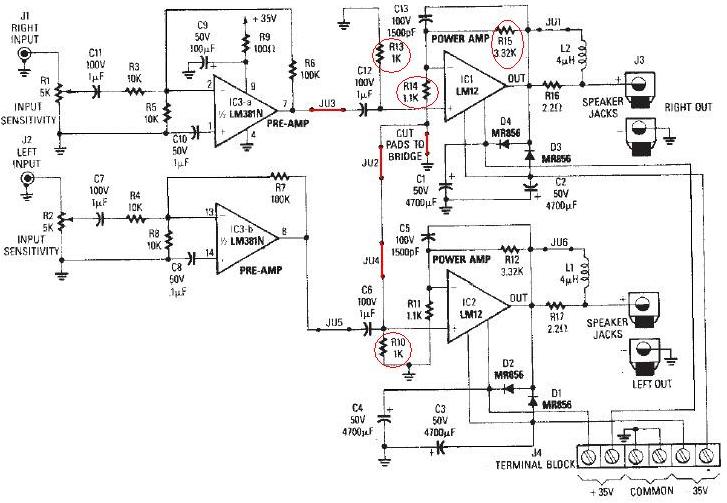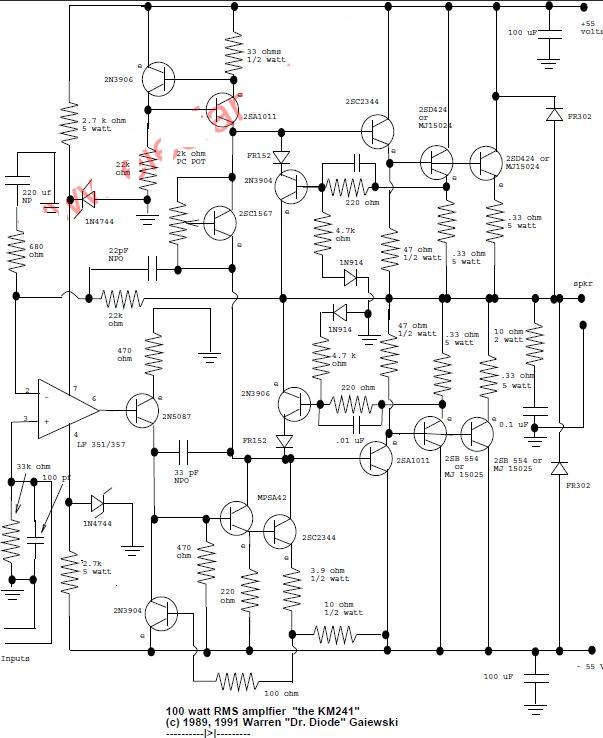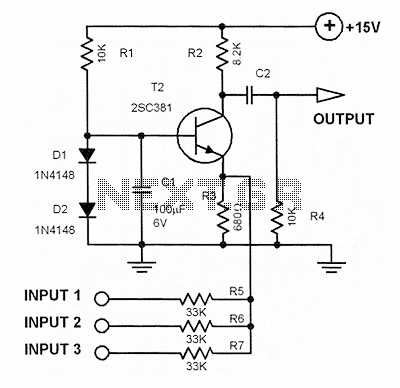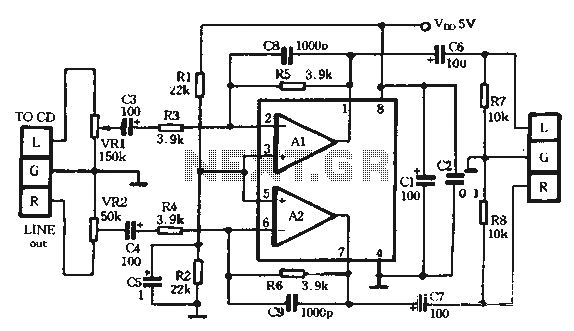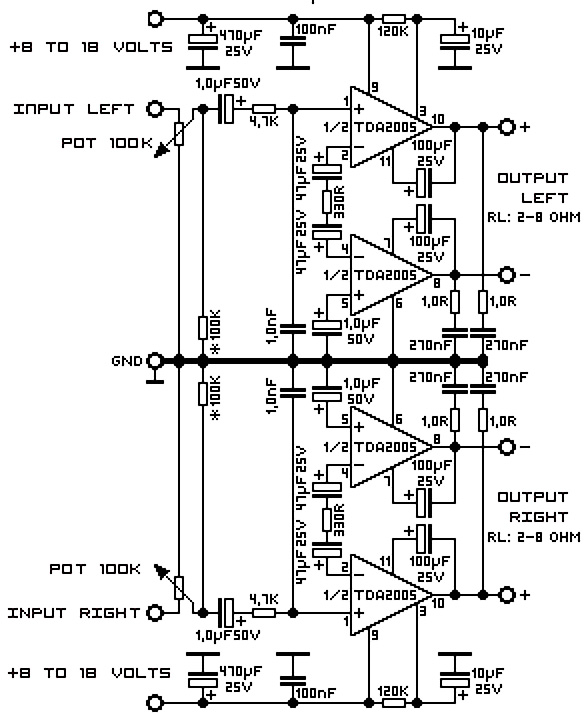
10W Audio Amplifier with Bass-boost

10W audio amplifier with bass boost. High quality, very simple design. No preamplifier required. Circuit diagram: Parts: P1 22K logarithmic potentiometer (dual-gang).
This audio amplifier circuit is designed to deliver a power output of 10 watts, making it suitable for driving small speakers in various audio applications. The inclusion of a bass boost feature enhances low-frequency performance, providing a richer sound experience. The design is streamlined and does not require a preamplifier, which simplifies the overall circuit and reduces potential points of failure.
The core components of the circuit include a dual-gang 22K logarithmic potentiometer (P1), which allows for volume control and tonal adjustments. The dual-gang configuration enables independent control of two channels, ensuring balanced audio output for stereo applications.
In terms of layout, the circuit typically employs a class AB amplifier configuration, which balances efficiency and sound quality. Key components may include transistors or operational amplifiers, along with passive components such as resistors and capacitors to filter and stabilize the audio signal.
The bass boost feature is usually implemented through a combination of capacitive coupling and feedback mechanisms, allowing users to tailor the low-frequency response to their preferences. This can be achieved by adjusting specific capacitors in the feedback loop of the amplifier or through additional circuitry that selectively enhances bass frequencies.
Overall, this 10W audio amplifier with bass boost is an excellent choice for hobbyists and professionals looking for a high-quality, straightforward solution for audio amplification needs. The design's simplicity and effectiveness make it a popular choice in various electronic audio projects.10W Audio Amplifier with Bass-boost. High Quality, very simple design. No preamplifier required. Circuit diagram: Parts: P1 22K Log.Potentiometer (Dual-gang for. 🔗 External reference
This audio amplifier circuit is designed to deliver a power output of 10 watts, making it suitable for driving small speakers in various audio applications. The inclusion of a bass boost feature enhances low-frequency performance, providing a richer sound experience. The design is streamlined and does not require a preamplifier, which simplifies the overall circuit and reduces potential points of failure.
The core components of the circuit include a dual-gang 22K logarithmic potentiometer (P1), which allows for volume control and tonal adjustments. The dual-gang configuration enables independent control of two channels, ensuring balanced audio output for stereo applications.
In terms of layout, the circuit typically employs a class AB amplifier configuration, which balances efficiency and sound quality. Key components may include transistors or operational amplifiers, along with passive components such as resistors and capacitors to filter and stabilize the audio signal.
The bass boost feature is usually implemented through a combination of capacitive coupling and feedback mechanisms, allowing users to tailor the low-frequency response to their preferences. This can be achieved by adjusting specific capacitors in the feedback loop of the amplifier or through additional circuitry that selectively enhances bass frequencies.
Overall, this 10W audio amplifier with bass boost is an excellent choice for hobbyists and professionals looking for a high-quality, straightforward solution for audio amplification needs. The design's simplicity and effectiveness make it a popular choice in various electronic audio projects.10W Audio Amplifier with Bass-boost. High Quality, very simple design. No preamplifier required. Circuit diagram: Parts: P1 22K Log.Potentiometer (Dual-gang for. 🔗 External reference
